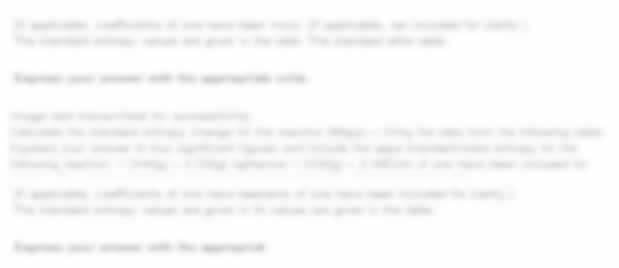/
Questions/
Assignment/
ECON1022: Assume that the firm has the property rights to the environment and, therefore, it can legally pollute as much as it pleases: Principles of Microeconomics Assignment, UOS, UK
Looking For Plagiarism Free Answers For Your UK College/ University Assignments.
BUY NOWECON1022: Assume that the firm has the property rights to the environment and, therefore, it can legally pollute as much as it pleases: Principles of Microeconomics Assignment, UOS, UK
| University | University of Southampton (UOS) |
|---|---|
| Subject | ECON1022: Principles of Microeconomics |
- Deforestation
All questions below are based on the following scenario. Suppose that the inverse demand curve for wood is p = 200 − Q, and the private marginal cost of the firms (that is, the unregulated supply function) is MCP = 80+Q. As it happens, cutting down trees generates all kinds of harmful effects not covered by unregulated loggers. For instance, floods occur more often, and soil erosion proceeds much faster. This externality is estimated to create marginal harm of MCE = Q, so that the true total social marginal cost is MCS = MCP + MCE = 80 + 2Q.
You may illustrate the related Consumer Surplus, Producer Surplus, Externality Cost and Tax Revenue (if relevant), etc. in the usual Supply-Demand picture.
- Unregulated market. Find a competitive equilibrium (pe, Qe) if this market is left unregulated. What is the deadweight loss relative to the welfare-maximizing social outcome?
- Pigouvian tax. Suppose that the government imposes a tax of t per unit of wood to reduce the damage caused by this deforestation. What should t be to eliminate the dead-weight loss?
- Pollution—Coasian approach
A firm’s private Marginal Cost is MC (q) = 8q, where q is the level of output. It can sell any number of units of output at the world price of 64. However, production inflicts damage on the firm’s neighbors. The Marginal Cost of externality inflicted depends on the firm’s output: MCext = 4 + 2q
- What is the utilitarian efficient level of output? What is utilitarian welfare? (surplus) then?
- Assume that the firm has property rights to the environment and, therefore, it can legally pollute as much as it pleases. In the absence of an agreement with its neighbors, what would its level of output be? Suppose that the neighbors negotiate with the firm. If the negotiations lead to maximal utilitarian welfare, what is the minimum payment that the neighbors must make to the firm to achieve the associated change in output? What is the maximum payment?
- Assume that the neighbors have property rights, so they can impose legal punitive damages if the firm pollutes at all. In the absence of an agreement between the firm and its neighbors, what would the level of output be? If an agreement maximizing utilitarian welfare between the firm and its neighbors is negotiated, what are the smallest and largest payments that the firm would have to pay?
- Assume that the firm has property rights. If the government wishes to control the externality by imposing a Pigouvian tax in the form of a unit tax on firms, what should the tax be to maximize utilitarian efficiency? How much revenue does it collect?
Do You Need Assignment of This Question
- Asymmetric information
- Suppose a conventional competitive market for a high-quality product. There are many firms, each with no fixed cost and a marginal cost of MCH = 10 per unit. Entry and exit are free. There are 1000 consumers, each with a marginal value of the unit is MVH = 30 − q. In other words, their individual demand curve is q = 30 − p. What are the market demand and market supply curves? What is the equilibrium price, quantity, and welfare?
- Consider an alternative scenario. Suppose that the product on this market is of low quality. A low-quality product is cheaper to produce, the marginal cost is MCL = 6 per unit. Entry and exit is free. But the marginal value from a low-quality product is also lower, MVL = 20−q. In other words, their individual demand curve is q = 20 − p. What are the market demand and market supply curves? What is the equilibrium price, quantity, and welfare?
- Suppose that both high and low-quality firms can exist at the same time and offer their products. The costs of production of both products are the same as above, and there are no barriers to entry or exit. Each consumer can inspect the product and identify its quality. Each consumer has to decide whether to buy a high or low-quality product at the quality-dependent market price. Assume that consumers cannot mix the qualities, they have to pick one. After they decide, their marginal values depending on the quality are
the same as above. What is the equilibrium price for each quality? Which quality would the consumers choose? What are the equilibrium quantities in each market? - Suppose the situation is like in point 3, but no consumer can tell the qualities apart (Firms know whether they are producing and selling a high-quality or a low-quality product). Obviously, if both qualities are traded in equilibrium, they must be traded at the same price. What is the equilibrium price and quantity? What do consumers believe about the quality of the product in equilibrium?1 What are the welfare effects of asymmetric information?
Buy Answer of This Assessment & Raise Your Grades
Get help by expert
Seeking Online Assistance? Discover Top Microeconomics Assignment Help in the UK! Explore the efficient “Do My Assignment” services at Diploma Assignment Help UK. Elevate your academic journey at the University of Southampton (UOS) with expert guidance. Our tailored solutions enhance your grasp of ECON1022: Principles of Microeconomics. Trust us for comprehensive support and timely submissions. Score better with personalized online assignment help in the UK!
Recent solved questions
- ILM: Assess own leadership behaviours and potential in the context of a particular leadership model and own organisation's working practices and culture: Leadership skills and development, Assignment, UOA, UK
- ILM: Describe the factors that will influence the choice of leadership styles or behaviours in workplace situations: Leadership skills and development, Assignment, UOA, UK
- ATHE Level 7 Unit 5 : You Have Been A Senior Manager For Several Years And Have Decided That Your Next Career Move Should Be To Take Responsibility: Personal Development for Leadership and Strategic Management Assignment, UK
- You are required to prepare a 5-year strategy review to shareholders for evaluating the business simulation: 5-year strategy review to shareholders, Report, UOEL, UK
- CMI Unit 502: Approaches to achieving a balance of skills and experience in a team: Principles of Developing, Managing and Leading Individuals and Teams, Assignment, UK
- CMI Unit 502: Principles of Developing, Managing and Leading Individuals and Teams, Assignment, UK
- UNIT-701: How the principles of strategic leadership can be applied to respond to complex organisational challenges: Strategic Leadership, Assignment, CMI, UK
- UNIT- 701: The leadership behaviours and skills required to deliver strategic goals: Strategic Leadership, Assignment, CMI, UK
- UNIT- 701: Understanding of how the organisational context influences management and leadership practice: Strategic Leadership, Assignment, CMI, UK
- Evaluate the concept of evidence-based practice and assess how approaches to evidence-based practice: Evidence - based practices, Report, UOH, UK

